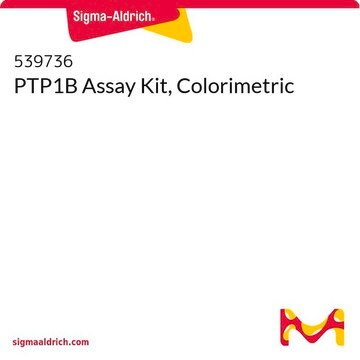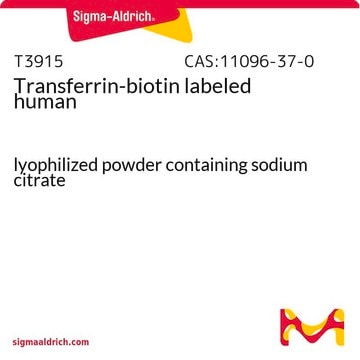567565
Sodium Stibogluconate
A pentavalent antimony compound that irreversibly inhibits protein tyrosine phosphatase (PTPase) activity, including Src homology PTPase-1 (SHP-1) (99% inhibition at ~11 µM) by forming a stable complex.
Synonyme(s) :
Sodium Stibogluconate, SSG, Antimony Sodium Gluconate, NaSbv, PTP Inhibitor XXIV, SHP1 Inhibitor IV
About This Item
Produits recommandés
Niveau de qualité
Pureté
≥90% dry basis (≥30% Sb content, titration)
Forme
solid
Fabricant/nom de marque
Calbiochem®
Conditions de stockage
OK to freeze
desiccated
protect from light
Couleur
white
Solubilité
water: 1 mg/mL
Conditions d'expédition
ambient
Température de stockage
2-8°C
InChI
1S/2C6H10O7.3Na.9H2O.3O.2Sb/c2*7-1-2(8)3(9)4(10)5(11)6(12)13;;;;;;;;;;;;;;;;;/h2*2-5,7-8,10H,1H2,(H,12,13);;;;9*1H2;;;;;/q2*-2;3*+1;;;;;;;;;;;;;2*+2/p-2/t2*2-,3-,4+,5-;;;;;;;;;;;;;;;;;/m11................./s1
Clé InChI
CUEDNFKBTFCOSV-UZVLBLASSA-L
Description générale
Actions biochimiques/physiologiques
PTPase activity, including Src homology PTPase-1 (SHP-1)
Conditionnement
Avertissement
Notes préparatoires
Reconstitution
Autres remarques
Pathak, M.K. and Yi, T. 2001. J. Immunol.167, 3391.
Informations légales
Mention d'avertissement
Warning
Mentions de danger
Conseils de prudence
Classification des risques
Acute Tox. 4 Inhalation - Acute Tox. 4 Oral - Aquatic Chronic 2
Code de la classe de stockage
11 - Combustible Solids
Classe de danger pour l'eau (WGK)
WGK 3
Point d'éclair (°F)
Not applicable
Point d'éclair (°C)
Not applicable
Certificats d'analyse (COA)
Recherchez un Certificats d'analyse (COA) en saisissant le numéro de lot du produit. Les numéros de lot figurent sur l'étiquette du produit après les mots "Lot" ou "Batch".
Déjà en possession de ce produit ?
Retrouvez la documentation relative aux produits que vous avez récemment achetés dans la Bibliothèque de documents.
Notre équipe de scientifiques dispose d'une expérience dans tous les secteurs de la recherche, notamment en sciences de la vie, science des matériaux, synthèse chimique, chromatographie, analyse et dans de nombreux autres domaines..
Contacter notre Service technique










